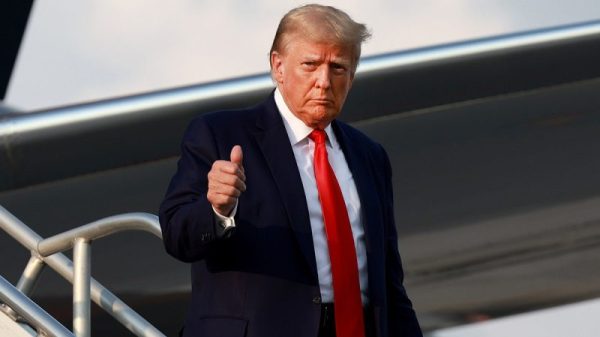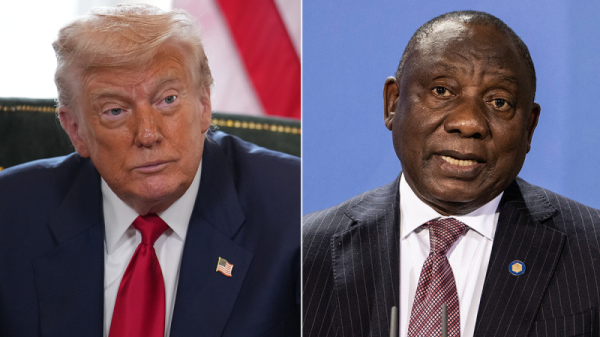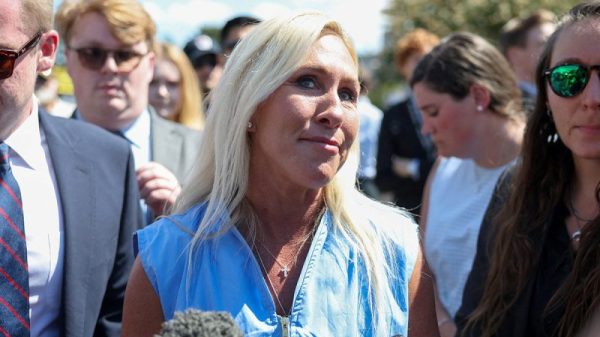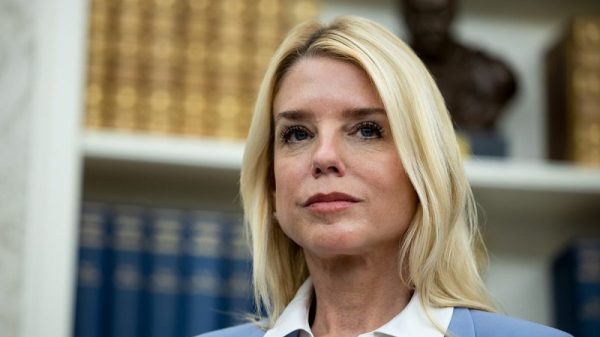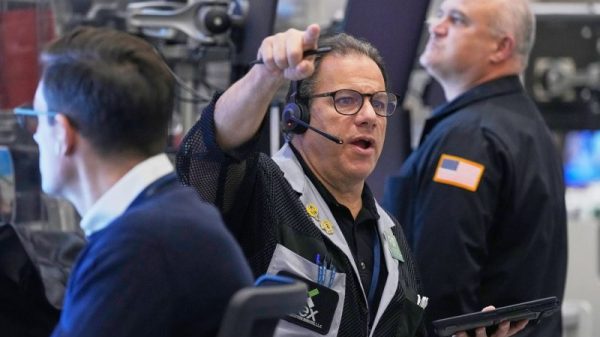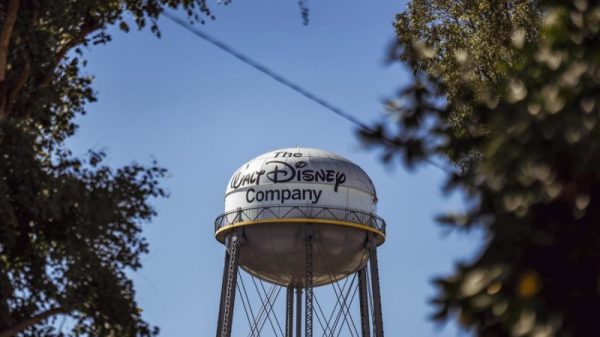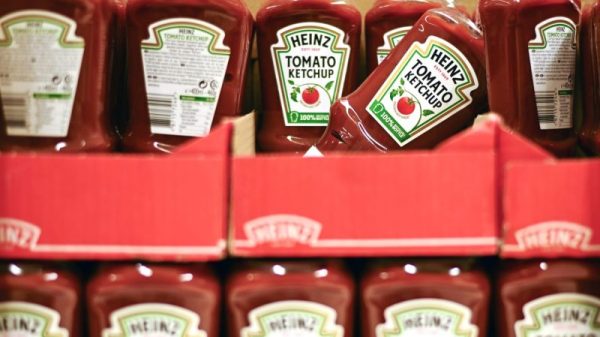Some of the issues and political stalemates that haunt the Supreme Court are returning for the term that begins Monday, accompanied by another concern: how to convince the public that the justices take seriously their ethical obligations.
Reports about some justices hobnobbing with billionaire friends on lavish trips and maintaining ties to those who have business before the court have become the elephant in the courtroom.
In recent weeks, two justices have spoken out to say the court should take steps to implement a pledge that Chief Justice John G. Roberts Jr. made in May: to make “certain that we as a court adhere to the highest standards of conduct.”
Justice Brett M. Kavanaugh said in a speech that he was hopeful the court could announce something “soon” on an ethics code that would bind the justices. Justice Elena Kagan said at an appearance at Notre Dame Law School that it would be a “good thing” for the court to adopt policies specific to the high court.
“It would help in our own compliance with the rules, and it would, I think, go far in persuading other people that we were adhering to highest standards of conduct,” Kagan said.
A Gallup poll released Friday shows that public approval of the Supreme Court remains mired at historically low levels. Just 41 percent of the public approves of how the court does its job, reflecting the dive that accompanied the court’s 2022 decision in Dobbs v. Jackson Women’s Health Organization, which overturned the fundamental right to an abortion that the court had established nearly 50 years earlier in Roe v. Wade.
Approval of the court divides sharply along political lines, with only 23 percent of Democrats and 40 percent of independents saying they approve of the court’s performance, compared with 56 percent of Republicans. Two years ago, 67 percent of Republicans approved of the court’s performance, according to Gallup. “Going forward, concerns about Supreme Court justices’ acceptance of gifts and lavish trips, particularly among two conservative justices, may subdue the public’s approval of and trust in the nation’s highest court,” the polling organization concluded.
Allies of the court’s conservatives say ethics concerns are being either unevenly applied or blown out of proportion because of the court’s move to the right since three justices nominated by President Donald Trump solidified a 6-to-3 conservative majority. But justices across the ideological spectrum have said confidence in their decision-making is key to public acceptance of the court’s role as the final word on the law and Constitution.
That will be tested this term as politically sensitive issues could again dominate headlines when the court completes the new term next June, less than five months before the 2024 presidential election.
Gun rights already are on the docket. The continued availability of the most commonly used drug to terminate pregnancies is almost sure to be reviewed. The issue of racial gerrymandering returns, and conservatives who want to see additional limits placed on affirmative action are urging the court to consider the selection process for one of the country’s highest-rated secondary schools, Thomas Jefferson High School for Science and Technology in Northern Virginia.
The court on Friday said it will take up laws passed in Texas and Florida restricting social media companies from removing certain political posts or accounts. Those are not the only cases that raise free speech issues in the context of social media.
“These cases could completely reshape the digital public sphere,” Jameel Jaffer, executive director of the Knight First Amendment Institute, said of the Texas and Florida laws. “The question of what limits the First Amendment imposes on legislatures’ ability to regulate social media is immensely important — for speech and for democracy as well. It’s difficult to think of any other recent First Amendment cases in which the stakes were so high.”
That’s not all. It would hardly be surprising to see issues arising from the prosecution of Trump in four separate criminal cases to rise to the high court. The justices could also be asked to consider whether Trump’s role in the Jan. 6, 2021, riot at the U.S. Capitol makes him ineligible to be on the 2024 presidential ballot.
It has become commonplace that the Supreme Court is thrust into the nation’s most contentious political debates.
Will Baude, a former Roberts law clerk, attributed the phenomenon to aggressive attorneys general from both liberal and conservative states challenging government policies from the administration of the opposing political party.
“The number of these lawsuits is staggering, and it’s become a standard part of partisan operating procedure,” Baude, a University of Chicago Law School professor, said during a term preview discussion.
That change, he said, is exacerbated by more polarized judicial nominations, the widespread grant of nationwide injunctions blocking federal policy, and the Supreme Court’s need to deal with issues on an expedited basis in what is known as the “shadow docket.”
“Compared to 20 years ago, just the number and speed with which major political issues are brought before the Supreme Court has changed, and in my view not necessarily for the better, putting the court at the center of a lot of these things,” he said.
In many cases, including this term, the justices are being asked to review decisions rendered by the conservative U.S. Court of Appeals for the 5th Circuit. The appeals court has ruled that the Second Amendment prevents the government from disarming people who are subject to domestic violence restraining orders; issued the opinion that would make it more difficult to access the long-approved abortion medication mifepristone; and declared the funding structure of the Consumer Finance Protection Board unconstitutional.
One question of the term, Baude said, is whether the court endorses the 5th Circuit’s dramatic approach, which would be “a big change in the law.” Or, he said, the justices could send a message to those judges to “cut it out and cool it.”
After its seismic 2022 decision in Dobbs, the court last term seemed to search sometimes for middle ground.
Not always. Its decisions rejecting affirmative action in college admissions, favoring the speech of the religious over anti-discrimination laws, and shutting down as overreaching President Biden’s plan to forgive student loan debt showed the dominance of the court’s six conservatives.
But there were times — in cases regarding the protections of the Voting Rights Act and the executive branch’s prominence regarding immigration policy, for example — where the majority indicated the challenges brought by conservative organizations and Republican-led states went too far.
“While the court in its final decisions showed again that it is one of the more conservative courts in history, the term ended without the vitriol and barricades that we saw in the wake of Dobbs,” said Gregory G. Garre, a Supreme Court practitioner who served as solicitor general under President George W. Bush.
But scrutiny of the court has concerned more than overturning precedent. Reports from ProPublica detailed Justice Clarence Thomas’s relationship with billionaire business executives and his failure to disclose lavish trips and gifts over many years. Thomas did not report luxury vacations underwritten by his friend, Harlan Crow, a Texas Republican donor. Crow also paid the private school tuition of one of Thomas’s relatives and bought several properties years ago from Thomas and his relatives — real estate transactions the justice disclosed for the first time in his annual financial report this year, after the articles were published.
The investigative news organization also reported on a free trip Justice Samuel A. Alito Jr. took, but did not disclose, to an Alaskan fishing resort with a billionaire hedge fund manager.
The reports, and investigations from other media outlets, have led Democratic lawmakers to back legislation that would impose ethics rules on the justices as strict as those that apply to members of Congress. Thomas and Alito have both said that under rules in place at the time, they did not believe they needed to report the free trips and private jet travel.
Critics say that in some cases, the justices are too close to those who are bringing cases to the court. For instance, there is a trio of cases challenging the power of federal agencies, long a target of conservatives concerned about what they consider unaccountable government bureaucrats.
In a lawsuit brought by herring fishers in New Jersey, the justices are being asked to overrule a long-standing doctrine that requires judges to defer to agency interpretations of federal law when a statute’s meaning is unclear. The second case challenges the funding structure of the CFPB, whose independence Congress sough to ensure by not making it dependent on an annual appropriation. The third raises the question of whether the Securities and Exchange Commission can resolve fraud cases through administrative proceedings rather than in federal court.
In recent years, the Supreme Court has been less likely to invoke the deference to agency expertise established in Chevron U.S.A. v. Natural Resources Defense Council. Justice Neil M. Gorsuch wrote in a dissent last year that the rule — known as Chevron deference — tips the scale in favor of the federal government in legal disputes and removes the court from its proper role of interpreting the law. He suggested it should be tossed aside.
The Biden administration and attorneys general from Democratic-led states defend the rule and say courts should rely on agency experts. Throwing out Chevron, they worry, could make it more difficult for agencies to carry out progressive policies to protect public health, the environment and consumers.
“Keeping people safe, keeping our air and water clean, and ensuring states provide much-needed services to all of our residents requires real technical and subject matter expertise,” said D.C. Attorney General Brian L. Schwalb, one of 22 state attorneys general who filed a brief in support of Chevron deference. “It isn’t possible to legislate every detail of complex regulatory systems and programs — and nonexperts should not be in charge of making the highly technical rules needed to do everything from controlling pollution to providing disaster relief to delivering health insurance.”
Attorney Roman Martinez, who was a Roberts clerk, said during a recent Supreme Court preview session at Georgetown Law School that there is “good reason to think the challengers have a lot of wind at their back” because of the changing composition of the court with the addition of three justices nominated by Trump.
Democratic lawmakers have called on Thomas to recuse from the case seeking to overturn Chevron after ProPublica recently revealed the justice’s attendance at a meeting of donors to the Koch network, founded by billionaire industrialist Charles Koch and his late brother, David Koch. The network has given millions of dollars to the Cause of Action Institute, the conservative legal organization representing the fishers. Thomas has not responded to calls for his recusal.
Separately, Alito has dismissed requests from Democrats that he recuse from an upcoming tax case because one of the attorneys in the matter interviewed Alito twice for articles that appeared in the Wall Street Journal editorial section. Alito used the interviews to defend himself and asserted that Congress has no authority to impose an ethics code on the high court.
Alito said in a statement that recusal was not necessary because the lawyer who co-wrote the articles “did so as a journalist, not an advocate,” and the tax case was never discussed.
Some of the issues and political stalemates that haunt the Supreme Court are returning for the term that begins Monday, accompanied by another concern: how to convince the public that the justices take seriously their ethical obligations.
Reports about some justices hobnobbing with billionaire friends on lavish trips and maintaining ties to those who have business before the court have become the elephant in the courtroom.
In recent weeks, two justices have spoken out to say the court should take steps to implement a pledge that Chief Justice John G. Roberts Jr. made in May: to make “certain that we as a court adhere to the highest standards of conduct.”
Justice Brett M. Kavanaugh said in a speech that he was hopeful the court could announce something “soon” on an ethics code that would bind the justices. Justice Elena Kagan said at an appearance at Notre Dame Law School that it would be a “good thing” for the court to adopt policies specific to the high court.
“It would help in our own compliance with the rules, and it would, I think, go far in persuading other people that we were adhering to highest standards of conduct,” Kagan said.
A Gallup poll released Friday shows that public approval of the Supreme Court remains mired at historically low levels. Just 41 percent of the public approves of how the court does its job, reflecting the dive that accompanied the court’s 2022 decision in Dobbs v. Jackson Women’s Health Organization, which overturned the fundamental right to an abortion that the court had established nearly 50 years earlier in Roe v. Wade.
Approval of the court divides sharply along political lines, with only 23 percent of Democrats and 40 percent of independents saying they approve of the court’s performance, compared with 56 percent of Republicans. Two years ago, 67 percent of Republicans approved of the court’s performance, according to Gallup. “Going forward, concerns about Supreme Court justices’ acceptance of gifts and lavish trips, particularly among two conservative justices, may subdue the public’s approval of and trust in the nation’s highest court,” the polling organization concluded.
Allies of the court’s conservatives say ethics concerns are being either unevenly applied or blown out of proportion because of the court’s move to the right since three justices nominated by President Donald Trump solidified a 6-to-3 conservative majority. But justices across the ideological spectrum have said confidence in their decision-making is key to public acceptance of the court’s role as the final word on the law and Constitution.
That will be tested this term as politically sensitive issues could again dominate headlines when the court completes the new term next June, less than five months before the 2024 presidential election.
Gun rights already are on the docket. The continued availability of the most commonly used drug to terminate pregnancies is almost sure to be reviewed. The issue of racial gerrymandering returns, and conservatives who want to see additional limits placed on affirmative action are urging the court to consider the selection process for one of the country’s highest-rated secondary schools, Thomas Jefferson High School for Science and Technology in Northern Virginia.
The court on Friday said it will take up laws passed in Texas and Florida restricting social media companies from removing certain political posts or accounts. Those are not the only cases that raise free speech issues in the context of social media.
“These cases could completely reshape the digital public sphere,” Jameel Jaffer, executive director of the Knight First Amendment Institute, said of the Texas and Florida laws. “The question of what limits the First Amendment imposes on legislatures’ ability to regulate social media is immensely important — for speech and for democracy as well. It’s difficult to think of any other recent First Amendment cases in which the stakes were so high.”
That’s not all. It would hardly be surprising to see issues arising from the prosecution of Trump in four separate criminal cases to rise to the high court. The justices could also be asked to consider whether Trump’s role in the Jan. 6, 2021, riot at the U.S. Capitol makes him ineligible to be on the 2024 presidential ballot.
It has become commonplace that the Supreme Court is thrust into the nation’s most contentious political debates.
Will Baude, a former Roberts law clerk, attributed the phenomenon to aggressive attorneys general from both liberal and conservative states challenging government policies from the administration of the opposing political party.
“The number of these lawsuits is staggering, and it’s become a standard part of partisan operating procedure,” Baude, a University of Chicago Law School professor, said during a term preview discussion.
That change, he said, is exacerbated by more polarized judicial nominations, the widespread grant of nationwide injunctions blocking federal policy, and the Supreme Court’s need to deal with issues on an expedited basis in what is known as the “shadow docket.”
“Compared to 20 years ago, just the number and speed with which major political issues are brought before the Supreme Court has changed, and in my view not necessarily for the better, putting the court at the center of a lot of these things,” he said.
In many cases, including this term, the justices are being asked to review decisions rendered by the conservative U.S. Court of Appeals for the 5th Circuit. The appeals court has ruled that the Second Amendment prevents the government from disarming people who are subject to domestic violence restraining orders; issued the opinion that would make it more difficult to access the long-approved abortion medication mifepristone; and declared the funding structure of the Consumer Finance Protection Board unconstitutional.
One question of the term, Baude said, is whether the court endorses the 5th Circuit’s dramatic approach, which would be “a big change in the law.” Or, he said, the justices could send a message to those judges to “cut it out and cool it.”
After its seismic 2022 decision in Dobbs, the court last term seemed to search sometimes for middle ground.
Not always. Its decisions rejecting affirmative action in college admissions, favoring the speech of the religious over anti-discrimination laws, and shutting down as overreaching President Biden’s plan to forgive student loan debt showed the dominance of the court’s six conservatives.
But there were times — in cases regarding the protections of the Voting Rights Act and the executive branch’s prominence regarding immigration policy, for example — where the majority indicated the challenges brought by conservative organizations and Republican-led states went too far.
“While the court in its final decisions showed again that it is one of the more conservative courts in history, the term ended without the vitriol and barricades that we saw in the wake of Dobbs,” said Gregory G. Garre, a Supreme Court practitioner who served as solicitor general under President George W. Bush.
But scrutiny of the court has concerned more than overturning precedent. Reports from ProPublica detailed Justice Clarence Thomas’s relationship with billionaire business executives and his failure to disclose lavish trips and gifts over many years. Thomas did not report luxury vacations underwritten by his friend, Harlan Crow, a Texas Republican donor. Crow also paid the private school tuition of one of Thomas’s relatives and bought several properties years ago from Thomas and his relatives — real estate transactions the justice disclosed for the first time in his annual financial report this year, after the articles were published.
The investigative news organization also reported on a free trip Justice Samuel A. Alito Jr. took, but did not disclose, to an Alaskan fishing resort with a billionaire hedge fund manager.
The reports, and investigations from other media outlets, have led Democratic lawmakers to back legislation that would impose ethics rules on the justices as strict as those that apply to members of Congress. Thomas and Alito have both said that under rules in place at the time, they did not believe they needed to report the free trips and private jet travel.
Critics say that in some cases, the justices are too close to those who are bringing cases to the court. For instance, there is a trio of cases challenging the power of federal agencies, long a target of conservatives concerned about what they consider unaccountable government bureaucrats.
In a lawsuit brought by herring fishers in New Jersey, the justices are being asked to overrule a long-standing doctrine that requires judges to defer to agency interpretations of federal law when a statute’s meaning is unclear. The second case challenges the funding structure of the CFPB, whose independence Congress sough to ensure by not making it dependent on an annual appropriation. The third raises the question of whether the Securities and Exchange Commission can resolve fraud cases through administrative proceedings rather than in federal court.
In recent years, the Supreme Court has been less likely to invoke the deference to agency expertise established in Chevron U.S.A. v. Natural Resources Defense Council. Justice Neil M. Gorsuch wrote in a dissent last year that the rule — known as Chevron deference — tips the scale in favor of the federal government in legal disputes and removes the court from its proper role of interpreting the law. He suggested it should be tossed aside.
The Biden administration and attorneys general from Democratic-led states defend the rule and say courts should rely on agency experts. Throwing out Chevron, they worry, could make it more difficult for agencies to carry out progressive policies to protect public health, the environment and consumers.
“Keeping people safe, keeping our air and water clean, and ensuring states provide much-needed services to all of our residents requires real technical and subject matter expertise,” said D.C. Attorney General Brian L. Schwalb, one of 22 state attorneys general who filed a brief in support of Chevron deference. “It isn’t possible to legislate every detail of complex regulatory systems and programs — and nonexperts should not be in charge of making the highly technical rules needed to do everything from controlling pollution to providing disaster relief to delivering health insurance.”
Attorney Roman Martinez, who was a Roberts clerk, said during a recent Supreme Court preview session at Georgetown Law School that there is “good reason to think the challengers have a lot of wind at their back” because of the changing composition of the court with the addition of three justices nominated by Trump.
Democratic lawmakers have called on Thomas to recuse from the case seeking to overturn Chevron after ProPublica recently revealed the justice’s attendance at a meeting of donors to the Koch network, founded by billionaire industrialist Charles Koch and his late brother, David Koch. The network has given millions of dollars to the Cause of Action Institute, the conservative legal organization representing the fishers. Thomas has not responded to calls for his recusal.
Separately, Alito has dismissed requests from Democrats that he recuse from an upcoming tax case because one of the attorneys in the matter interviewed Alito twice for articles that appeared in the Wall Street Journal editorial section. Alito used the interviews to defend himself and asserted that Congress has no authority to impose an ethics code on the high court.
Alito said in a statement that recusal was not necessary because the lawyer who co-wrote the articles “did so as a journalist, not an advocate,” and the tax case was never discussed.

